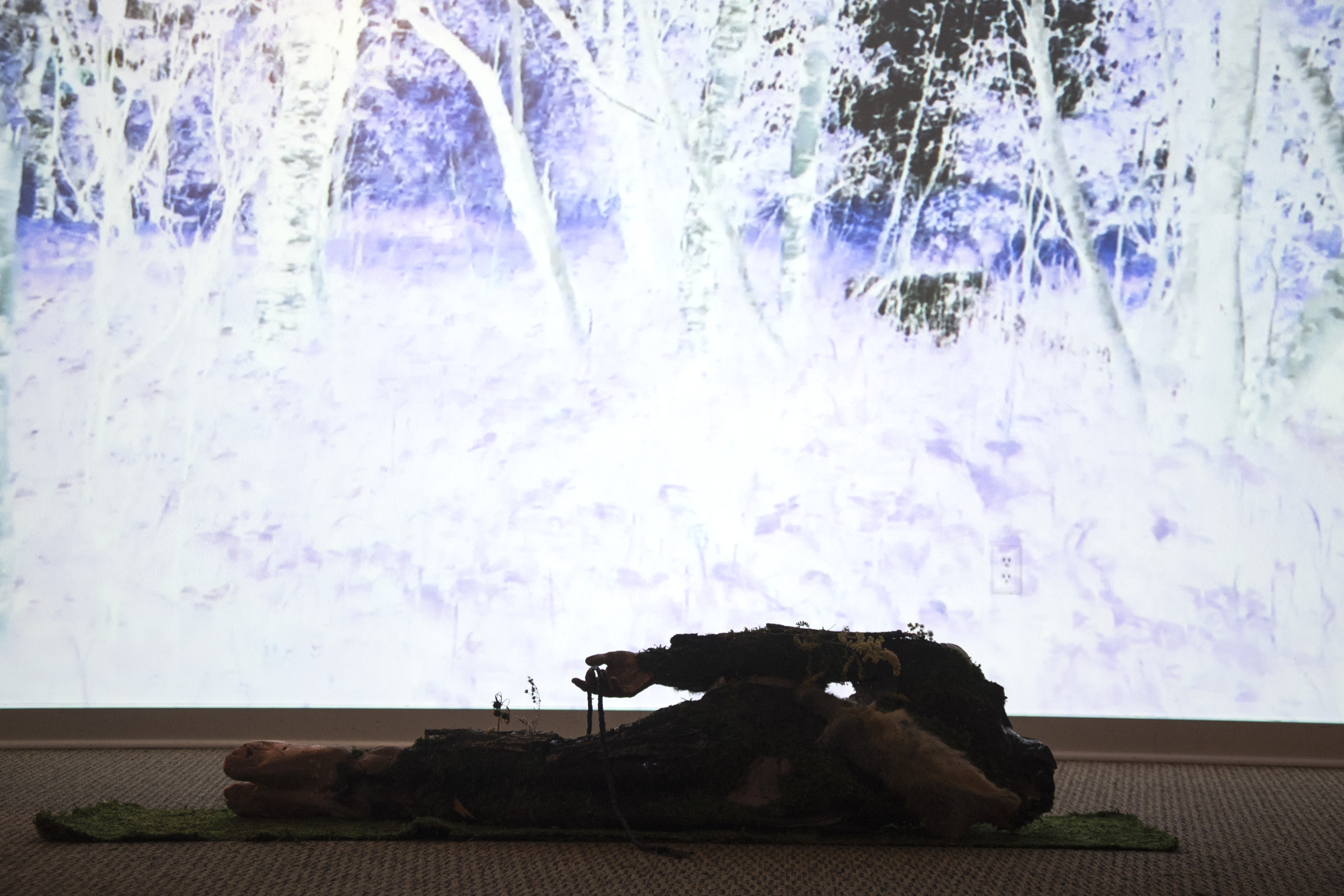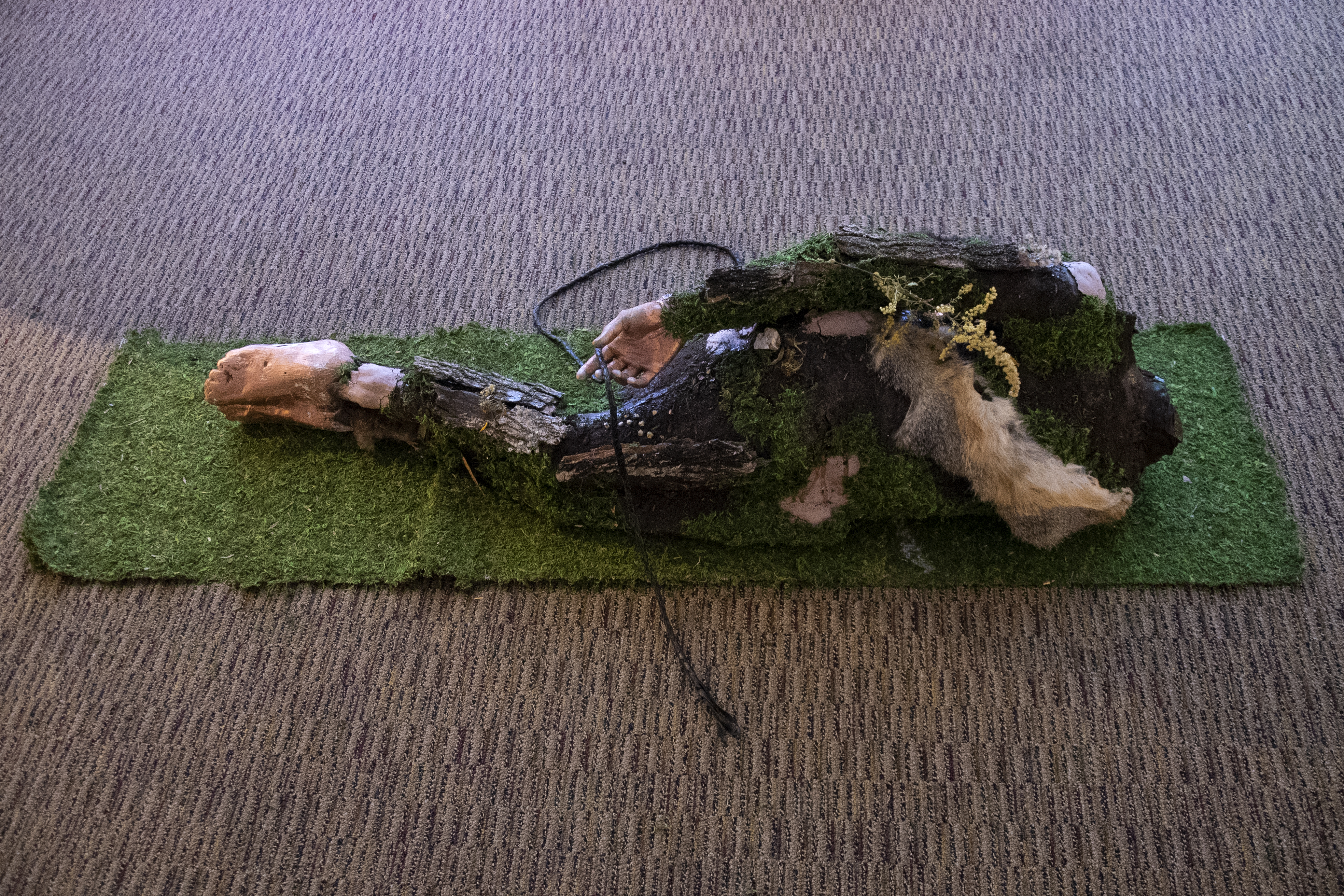


HULDRA
2022
THE MEDIUM
SPRINGDALE, AR
2022
THE MEDIUM
SPRINGDALE, AR
Huldra is a seductive forest creature found in Scandinavian folklore. The name is derived from a root meaning “covered” or “secret.” There are many places throughout Norway that are named after these “hidden folk.” She is described as a beautiful white woman with blonde hair, sometimes wearing a flower crown, and has the distinctive non-human features of a cow’s tail and a hollowed-out back, resembling that of a hollowed-out tree. The legend goes that, if approached kindly, she is known to offer words of wisdom that may help a lost traveler find their way or may aid in a fisherman’s daily catch. She is also known to lure men into the woods in her attempts to find a husband, for when she is able to successfully marry a man in a church, she loses her tail and her beauty while gaining the strength of ten men. In some stories where a man is unwilling to marry her, or disrespects her by reacting negatively to her tail, she forces them to dance to their death, or she simply kills them. The way Hulder (pluarl) react to humans is directly related to how they are treated. The moral of the story can be translated into what is known here in the US as the Golden Rule: treat others the way you want to be treated.
I found myself drawn to this mythological creature, as someone who is often visually misinterpreted. Revealing myself to be queer and transgender in any space, especially within the state of Arkansas, often feels like a life-or-death situation. As a first-generation Mexican-Norwegian-American, I see an inherent connectivity between humanity through storytelling, for there are so many stories around the world from all cultures that parallel that of the Huldra. This cross-cultural lore reveals that it is human to desire to be seen in your truth and to be accepted and loved.
The projection is made from videos I took on my family’s ancestral lands in Northern Norway during my time there this past summer. The audio is a mixture of edited sound from the original videos with that of a slowed down and manipulated rendition by Fuglafólk (Andras Ellendersen and Thiago Ody) of the oldest known Nordic folkloric song, “Drømde mik en drøm i nat,” which translates to “I dreamt a dream last night.” The original lyrics were written in runes and have been transcribed as “Drømde mik en drøm i nat um silki ok ærlik pæl.” There are a number of interpretations, the most commonly accepted being the following:
I dreamt a dream last night of silk and fine fur
I dreamt a dream last night of justice and fair play
I dreamt a dream last night of equality and honest measure
I found myself drawn to this mythological creature, as someone who is often visually misinterpreted. Revealing myself to be queer and transgender in any space, especially within the state of Arkansas, often feels like a life-or-death situation. As a first-generation Mexican-Norwegian-American, I see an inherent connectivity between humanity through storytelling, for there are so many stories around the world from all cultures that parallel that of the Huldra. This cross-cultural lore reveals that it is human to desire to be seen in your truth and to be accepted and loved.
The projection is made from videos I took on my family’s ancestral lands in Northern Norway during my time there this past summer. The audio is a mixture of edited sound from the original videos with that of a slowed down and manipulated rendition by Fuglafólk (Andras Ellendersen and Thiago Ody) of the oldest known Nordic folkloric song, “Drømde mik en drøm i nat,” which translates to “I dreamt a dream last night.” The original lyrics were written in runes and have been transcribed as “Drømde mik en drøm i nat um silki ok ærlik pæl.” There are a number of interpretations, the most commonly accepted being the following:
I dreamt a dream last night of silk and fine fur
I dreamt a dream last night of justice and fair play
I dreamt a dream last night of equality and honest measure